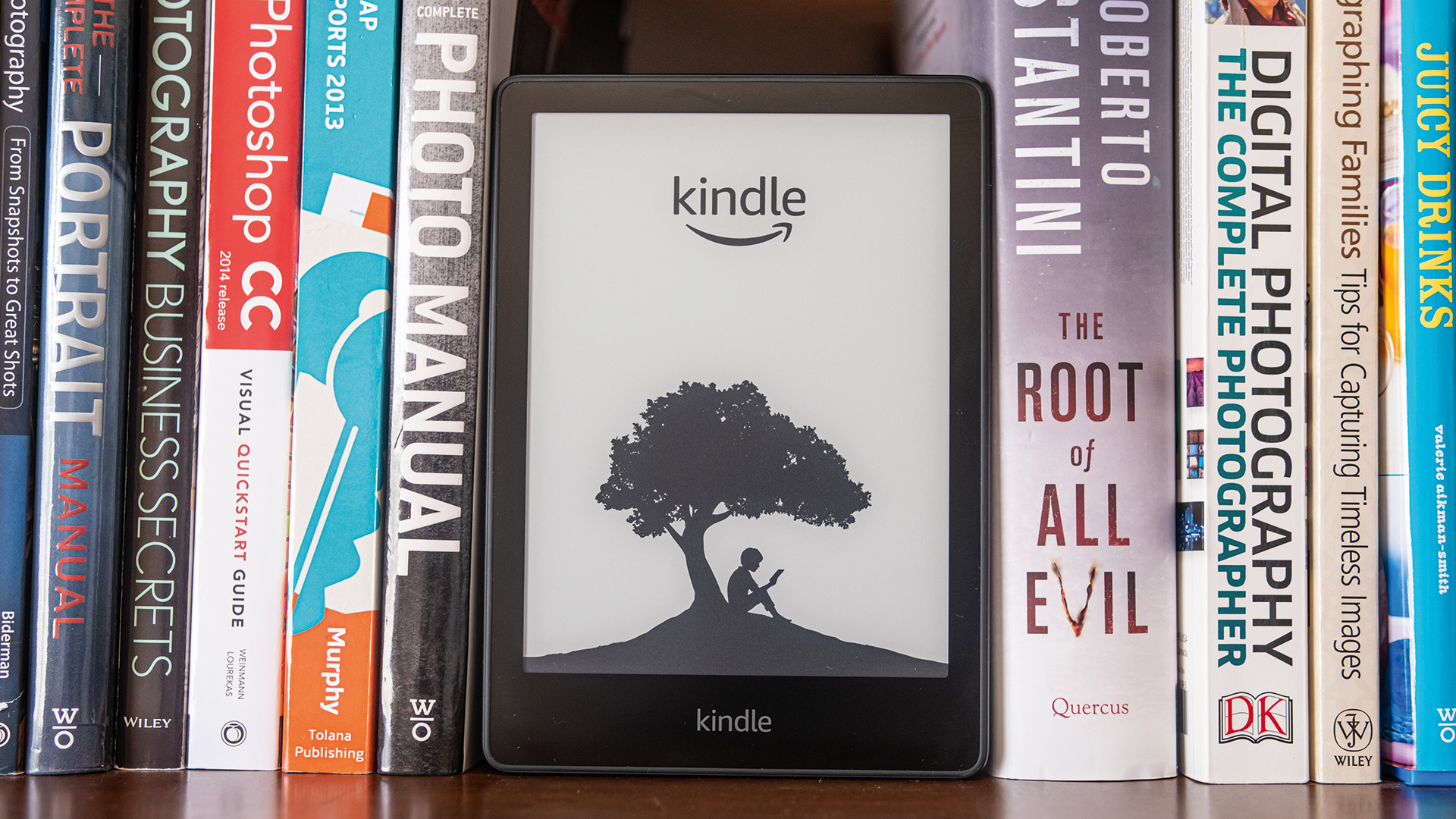You are viewing your 1 free article this month. Login to read more articles.
We need to talk about digital pollution
Publishing must tackle the environmental impact of e-books, as well as print.
For over a decade, e-readers have been penetrating the book market, and the European market is expected to grow by 4.43% a year between 2023 and 2028. In France, e-books have accounted for 10.3% of books sales in 2022 – 6.94% in the US. Light to carry, easy to use… some e-reader advocates also claim that, from an environmental standpoint, it is better to opt for a single e-reader device that will be used to read multiple books than buying several of its traditional printed counterparts.
Such an ecological argument may seem common sense, but in reality, it’s not that simple. Between 2003 and 2023, a dozen studies have been carried out by various organisations and researchers, trying to calculate if e-books have a lesser impact on the planet than paper books.
Findings vary deeply. In 2008, Carbon 4, a consulting firm specialising in low carbon strategies for companies carried out a study for Hachette that found found that the manufacturing of a Sony Reader E-book produced 235 kg of carbon dioxide, while a paper book generated only 1.3 kg of carbon dioxide. In short, you’d have to read 180 books on an e-reader before it became more Earth-friendly than buying paper equivalents.
But new studies have come to less worrying conclusions. In 2011, Daniel Lloyd, a researcher at the California Polytechnic State University, demonstrated that a consumer needs to read between 40 and 50 e-books to compensate the pollution caused by the production of an electronic reading device. And in June 2021, a study published by the Heldgeog Company, a Dutch consulting firm specialising in the ecological transformation of corporations, concluded that if someone reads more than 25 books over a period of five years, an e-reader is better for the environment than print books in 25 out of 27 environmental impact categories, such as human toxicity and ozone depletion.
Digital pollution is colossal, and it is the fastest-growing type of pollution. The global digital industry consumes enough water, material and energy to give it a footprint triple that of a country such as the UK.
We have been told that turning digital will help "dematerialise" our way of life and save the planet […] I’m sorry to say this couldn’t be further from the truth
But of course, many people don’t just use tablets for reading books alone. If a tablet is, for instance, also used to read the news, its carbon footprint is more rapidly compensated. The size of the screen also plays a role in the quantity of metals needed to manufacture a reading device, and the lifespan of the battery is a parameter that should not be overlooked. So the more you dig into it, the more complicated it becomes.
So I asked someone who has been studying the ecological footprint of digital technologies for more than 20 years: Lorenz Hilty, a professor at the Department of Informatics of the University of Zurich.
He had some clearer answers: “If books are produced with wood from sustainable forestry, you roughly have to read 30-40 books on a Kindle before it begins to be less carbon dioxide-intensive to read on the device. If we consider the scarce metals needed to produce any digital device, it will take even more time before the digital version becomes ’better’. If printed books are shared (e.g. library books), their environmental impact is very low.”
E-reader manufacturers are however taking steps to make their digital products more sustainable.
This conclusion may seem counterintuitive to many. We have been told that turning digital will help "dematerialise" our way of life and save the planet. After spending two years reporting across four continents for my book The Dark Cloud, I’m sorry to say this couldn’t be further from the truth.
Digital pollution is colossal, and it is the fastest-growing type of pollution. The global digital industry consumes enough water, material and energy to give it a footprint triple that of a country such as the UK. Digital technologies currently use 10 per cent of the world’s electricity, and account for close to 4% of global carbon dioxide emissions — almost double that of the global civil aviation sector.
Consumers are becoming increasingly aware of the impact of digital technology: a poll conducted in 2019 found for instance that 40% of French people see a link between their digital practices and global warming. In the UK, groups like the Publishers Association and Independent Publishers Guild have sustainability initiatives in place, but I didn’t receive a response at the time of writing as to whether these initiatives are concerned on educating consumers about the sustainability of their own habits.
Given that UK e-book sales shrank by 8.3% in 2022 , the sustainability of e-readers could become a key to their future. Kobo’s Clara2E e-reader has its cover made from over 85% recycled plastic, while Amazon claims that its electronic products (including the Kindle) feature up to 75% recycled plastic and 100% aluminium coming from recycling, and up to 90% recycled magnesium.
These measures are encouraging, but unless more is done across all industries to reduce digital pollution, we still have a crisis on our hands. In the end, empowering readers to understand the environmental cost of their consumption, whether they read on a Kindle, a Kobo, or good old-fashioned paper, is the first step towards a greater understanding of the future we face.
References
- “Europe E-book market size”, Mordor Intelligence, 2022.
- “France – Marché du livre papier et du numérique 2022-2023 chiffres clés”, Idboox, 30 Juin 2023.
- “Ebooks sales statistics 2023”, Wordsrated, 07 Juin 2023.
- “Pros and Cons of Ebooks”, The Urban Writer, 17 Juin 2022.
- Greg Kozak, “Printed scholarly books and e-book reading devices: A comparative life cycle assessment of two book options”, Center for sustainable systems, University of Michigan, 24 Août 2003.
- Daniel Lloyd, “Electronic readers versus printed material – an ecological comparison”; Cal Poly State University, Spring 2011.
- Saro Campisano, Rik Wessels and Joost Walterbos Hedgehog Company, “What has a lower environmental impact? Digital versus tradition reading, a comparative LCA”, 16 July 2021.
- “Digital : un monde virtuel et impact environnemental réel », Groupe BPCE, 02 Octobre 2019.
- “UK publishers2 eBook sales fall”, Books+Publishing, 06 Février 2023.
- RakutenKobo Website, sustainability section.
- Amazon website, Innovating products and services sub section in the section Sustainability.
















